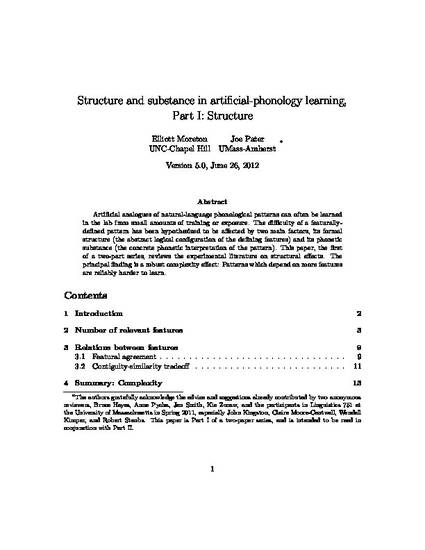
Article
Structure and Substance in Artificial-Phonology Learning, Part I: Structure
Language and Linguistics Compass
(2012)
Abstract
Artificial analogues of natural-language phonological patterns can often be learned in the lab from small amounts of training or exposure. The difficulty of a featurally-defined pattern has been hypothesized to be affected by two main factors, its formal structure (the abstract logical configuration of the defining features) and its phonetic substance (the concrete phonetic interpretation of the pattern). This paper, the first of a two-part series, reviews the experimental literature on structural effects. The principal finding is a robust complexity effect: Patterns which depend on more features are reliably harder to learn.
Disciplines
Publication Date
2012
DOI
https://doi.org/10.1002/lnc3.363
Publisher Statement
This is the peer reviewed version of the following article: Moreton, Elliott and Joe Pater. 2012. Structure and substance in artificial-phonology learning. Part I: Structure. Language and Linguistics Compass 6(11): 686-701 which has been published in final form at https://doi.org/10.1002/lnc3.363. This article may be used for non-commercial purposes in accordance with Wiley Terms and Conditions for Self-Archiving."
Citation Information
Elliott Moreton and Joe Pater. "Structure and Substance in Artificial-Phonology Learning, Part I: Structure" Language and Linguistics Compass Vol. 6 Iss. 11 (2012) p. 686 - 701 Available at: http://works.bepress.com/joe_pater/15/
